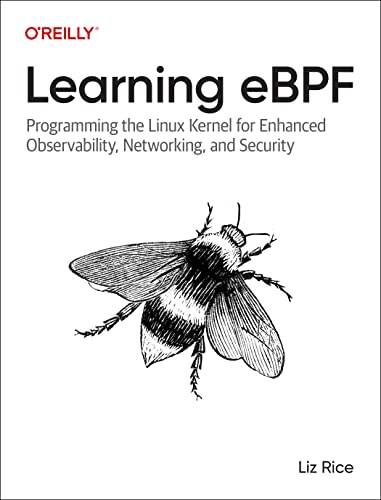Welcome to the world of Linux programming! In this beginner’s guide, we will explore the basics of programming in the open-source operating system, Linux.
Introduction to Linux Programming
Linux Programming involves creating applications and software specifically for the Linux operating system. It requires knowledge of the Linux kernel and the various distributions available, such as CentOS, Debian, and Linux Mint.
One of the key tools used in Linux Programming is the **Bash shell**, which provides a command-line interface for interacting with the operating system. Understanding commands like **chmod** for file-system permissions and **sudo** for elevated user privileges is essential for effective Linux Programming.
Package managers like **Yum** and **APT** are used to install and manage software packages, making it easy to access the tools needed for development. Learning to navigate the file system, create **shell scripts**, and utilize **iptables** for network security are important skills for Linux Programming.
Developing applications for Linux requires a solid understanding of the operating system’s architecture and how to utilize its resources efficiently. With the right knowledge and experience, Linux Programming can be a rewarding and valuable skill for any developer.
File Management and Permissions in Linux
File management and permissions are crucial aspects of Linux programming. Understanding how to navigate and manipulate files is essential for developing applications and scripts. In Linux, each file and directory has permissions that determine who can read, write, or execute them.
To manage file permissions, you can use the **chmod** command. This command allows you to change the permissions of a file or directory based on the user, group, or others. By using symbolic or octal notation with chmod, you can easily modify permissions to suit your needs.
Additionally, understanding how to manage files and directories using the command-line interface is essential for efficient Linux programming. With commands like **ls**, **cd**, **mv**, and **cp**, you can navigate, move, and copy files effortlessly.
By mastering file management and permissions in Linux, you will have a solid foundation for developing applications and scripts. Practice using different commands and exploring the file system to enhance your skills and become proficient in Linux programming.
Package and User Management in Linux Programming
Package managers streamline the process of managing software dependencies and ensure that your system is up-to-date with the latest releases. They also handle the resolution of conflicts between different software packages, making it easier for users to maintain a stable system.
In addition to package management, beginners should also familiarize themselves with user management tools in Linux. This includes understanding how to create, modify, and delete user accounts, set file-system permissions, and assign user identifiers for security purposes.
By mastering package and user management in Linux programming, beginners can enhance their overall experience with the operating system and gain the necessary skills to delve into more advanced topics such as shell scripting and system administration.
Networking and Security in Linux Programming

When diving into **Linux programming**, it’s crucial to understand the importance of **networking and security**. Networking in Linux involves setting up connections, configuring IP addresses, and managing network interfaces. Security, on the other hand, focuses on protecting your system from unauthorized access and potential threats.
In Linux programming, you will often interact with the **shell**, which is a command-line interface that allows you to execute commands. Familiarize yourself with **package managers** like Yum or APT, which help you install, update, and manage software packages on your system.
When it comes to security, tools like **iptables** can help you set up firewall rules to control incoming and outgoing network traffic. Understanding user permissions and utilizing **sudo** to execute commands with elevated privileges is also essential for securing your system.
Linux distributions like **CentOS** or **Debian** offer different approaches to networking and security, so choose one that aligns with your needs. Take the time to learn about the **Linux kernel** and how it interacts with various components of your system.
By mastering networking and security in Linux programming, you’ll be better equipped to develop applications, scripts, and other software with confidence. Stay curious, keep learning, and explore the vast world of Linux programming.
Advanced Concepts in Linux Programming

It is essential to grasp the intricacies of control flow and conditional programming to write efficient scripts. Understanding exit statuses and interpreters is crucial for troubleshooting and debugging.
Moreover, familiarity with file management and directory structures will enhance your capabilities in Linux programming. Advanced users often explore multi-booting and managing multiple Linux distributions for various projects.
By mastering these concepts, you can elevate your Linux programming skills and tackle more complex projects with confidence.
Overcoming Challenges in Transitioning to Linux Programming
When transitioning to Linux programming, it’s common to face challenges, but with the right approach, you can overcome them effectively. One of the key aspects to focus on is familiarizing yourself with the Linux distribution you are using and understanding its unique features. This will help you navigate through the system more efficiently and make the learning process smoother.
Another important aspect is getting comfortable with the Shell and Shell script programming. The Shell is a crucial component in Linux programming, and mastering it will allow you to execute commands, write scripts, and automate tasks effectively. Practice writing simple scripts and gradually move on to more complex tasks to build your skills.
Additionally, learning to use the package manager of your Linux distribution is essential for managing software installations and updates. Understanding how to use tools like Yum, APT, DNF, or RPM Package Manager will make it easier for you to install the necessary libraries and packages for your programming projects.
Lastly, don’t hesitate to seek help from the vast resources available online, such as man pages, forums, and tutorials. Building a strong foundation in Linux programming takes time and practice, so be patient with yourself and keep exploring new concepts and tools. By staying persistent and continuously learning, you’ll soon become proficient in Linux programming and unlock a world of opportunities in the tech industry.



